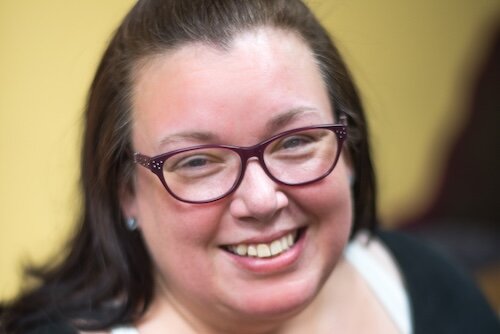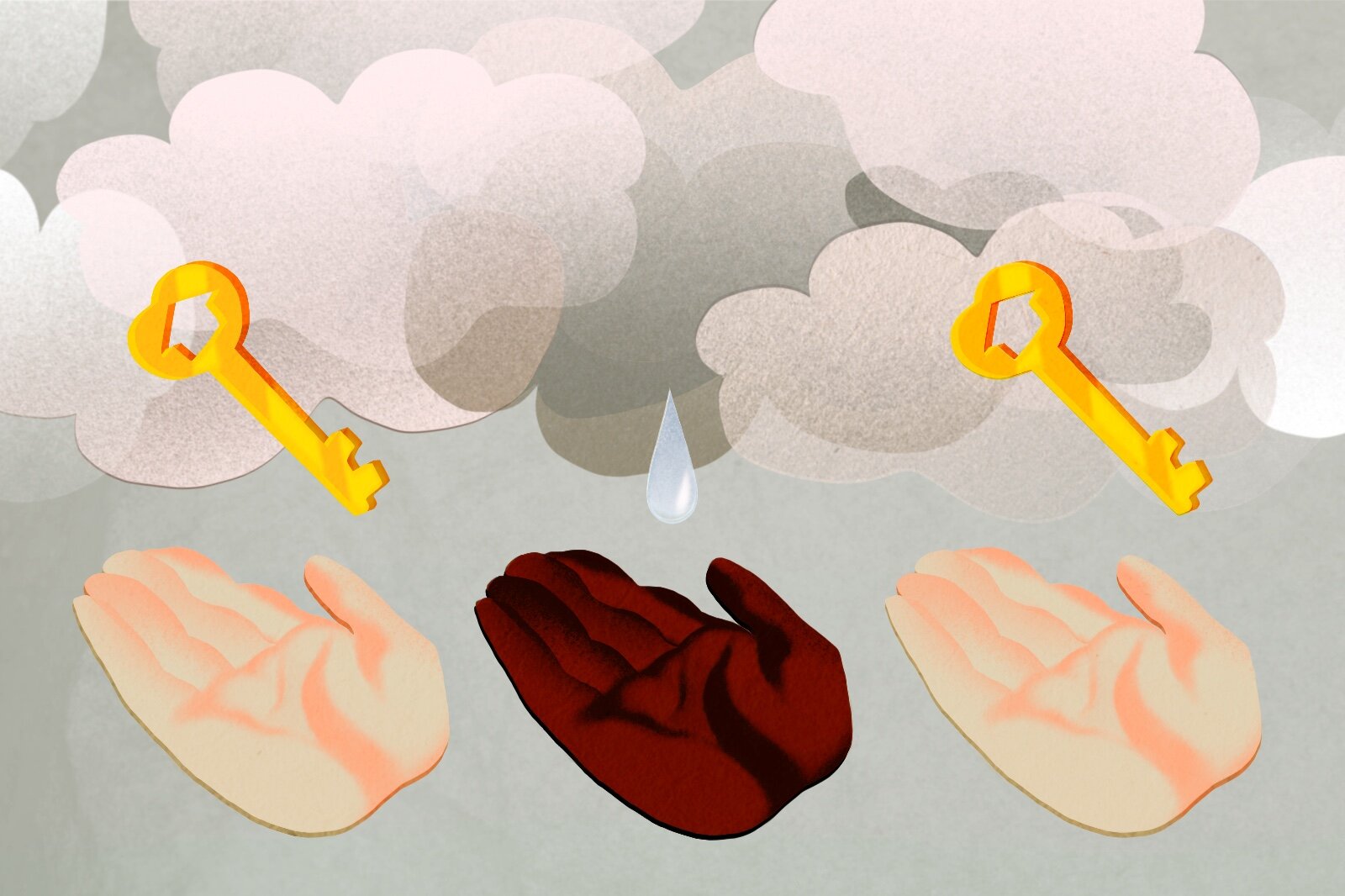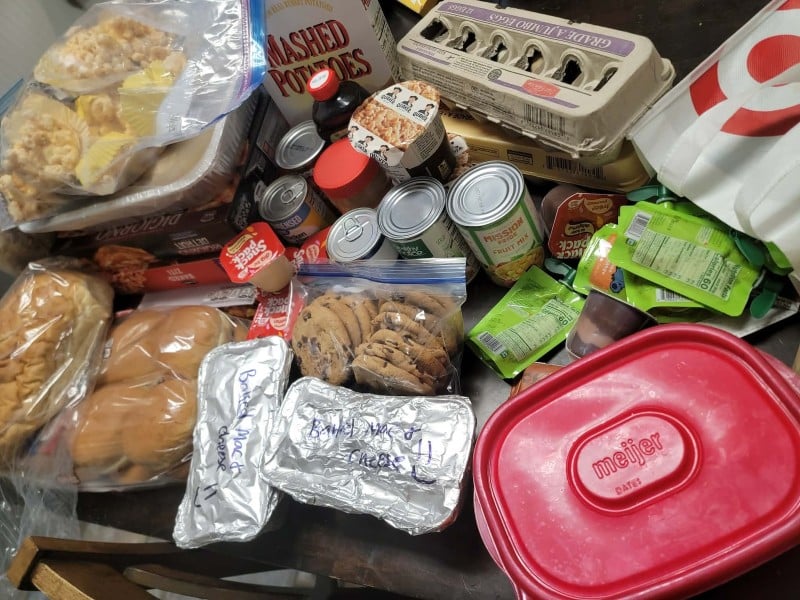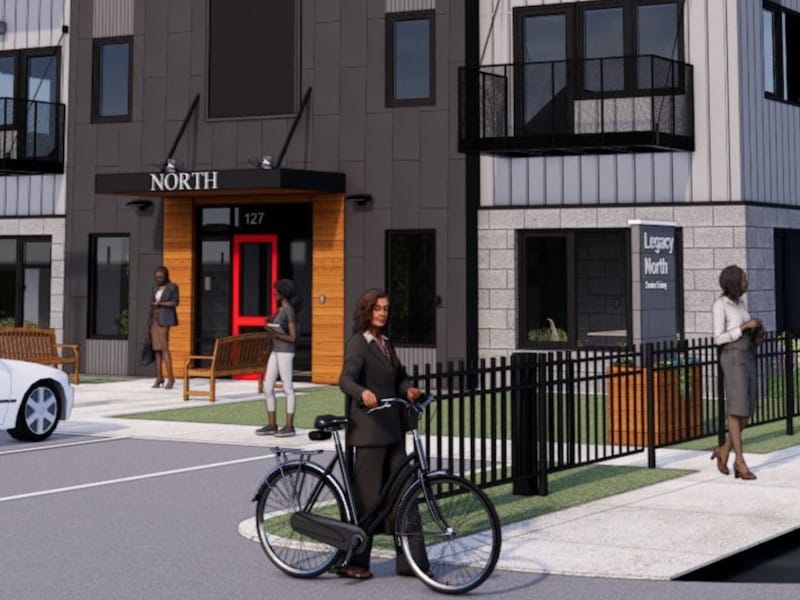“It is important to have those who are closest to the problem be closer to the solution.” — Patrese Griffin
Editor’s note: This story is part of Southwest Michigan Second Wave’s series on solutions to affordable housing and housing the unhoused. It is made possible by a coalition of funders including the City of Kalamazoo, Kalamazoo County, the ENNA Foundation, and the Kalamazoo County Land Bank. This story is also part of a series on barriers to obtaining affordable housing.
With homelessness on the rise, volunteers and local organizations are working hard to help Kalamazoo’s unhoused population, but more systematic change and long-term solutions are needed to fix a problem that has been a part of our community for far too long.
The enduring impact of racism on affordable housing in Kalamazoo illustrates a direct link between past injustices and present-day housing struggles. From the historic discriminatory practice of redlining, which systematically excluded Black families from housing opportunities to ongoing challenges rooted in income inequality, educational disparities, and digital literacy barriers, the housing landscape in Kalamazoo remains deeply divided along racial lines.
Despite the difficulties of righting systemic wrongs, Kalamazooans are working to implement local solutions to help remedy the longstanding problem.
A Historic Problem
Redlining is a systemic practice that can be traced back to the mid-20th century when discriminatory lending was prevalent in the United States. This practice involved the systematic denial of financial services, particularly mortgage loans, to residents of certain neighborhoods, primarily those inhabited by Black families and other minority groups which were outlined in red on early zoning maps of Kalamazoo.

This led to disinvestment in “redlined” areas which perpetuated racial segregation and inequalities across Kalamazoo’s neighborhoods. While explicit redlining practices are no longer legal, their legacy continues to influence housing and economic inequalities in Kalamazoo today.
Homelessness has been a problem of increasing concern in Kalamazoo and across the nation for decades. With the increasing number of unhoused individuals in the area exacerbated by the pandemic, the number of unhoused people in Kalamazoo has grown to more than 2,000 in recent years, many of them identifying as Black, Indigenous, or people of color (BIPOC), U.S Census data shows.
Modern-day statistical assessments of Kalamazoo’s population show how these historic practices and discriminatory policies are still playing out today.
Issues that disproportionately affect the Black population
Almost all the issues that impact homelessness disproportionately impact the BIPOC population in Kalamazoo. According to the 2022 census estimate, Black people in Kalamazoo County are twice as likely to live in poverty as their white counterparts — 21.4% of the Black population live in poverty as opposed to 10.8% of the white population.
Another contributing factor to this issue is income inequality. Black households in Kalamazoo County in general have a much lower median income — in 2022, it was $37,833 as opposed to $73,804 for white households in the same city. One reason for this is that Black people are much more likely to live alone or be the only adult in the household, which is a significant risk factor for homelessness. In 2022, half of Black households in the county consisted of just one adult living alone compared to only 13% of white households.
Black people in the U.S. are also much less likely to own their own home – 45% of Black households live in an owner-occupied home compared to 75% of white households according to the same 2022 Census estimate. That gap has remained largely unchanged since the 1970’s.
There are several issues that are vestiges of racially discriminatory housing policies like redlining. Two of these issues which compound the difficulty of implementing solutions for the housing crisis are literacy and education. Lower levels of literacy and related discrepancies in school completion rates can pose a significant barrier to people looking to access affordable housing.
Black adults age 25 or older in Kalamazoo County are less likely to be high school or college graduates: 10% of Blacks are high school dropouts and 27% have a bachelor’s degree. By comparison, only 4% of white Kalamazooans are high school dropouts and 42% have a bachelor’s degree.
There are also practical, administrative obstacles that further restrict the access to affordable housing for those most in need. Often, large amounts of complex paperwork can be involved in applying for housing vouchers as well as renting and maintaining an apartment or house in the city.
There is also a certain amount of internet and technology literacy that can be required for renting long-term housing. Prospective tenants who are not internet or technology-savvy often have difficulty accessing these services and the tools put in place to help them.
“Once people get called for the voucher, they think the apartment is just going to be there waiting for them the next day…but that’s not the case,” says Meg Forrest, a local volunteer who works with Kalamazoo’s unhoused population, helping folks to navigate the often complex administrative processes in place to help them.
Forrest, a lifelong Kalamazoo resident, says she originally began volunteering with the unhoused population in town after seeing urgent need requests through her community on Facebook.

“The biggest thing, I think, is that the people who are offering help or have programs to help are (offering) blanket solutions, so they’re not able to work for every individual, and I think that they disregard all of the difficulties that people can have in reaching out for help.” That creates more distrust and systemic trauma for the people trying to reach out or access resources, Forrest says.
For example, “You’re expected to read gobs of paperwork” to get a housing voucher, says Forrest, which poses a huge barrier for those who are illiterate or may have mental health issues that can make it difficult to retain information.
Forrest also highlights that it can be difficult for many unhoused people to make it to meetings without reliable transportation, and those without reliable access to computers, internet, or phone service have the additional hurdle of accessing online portals or websites used to apply for housing or pay rent and vouchers.
Trying to help
Some offer solutions attempting to ease the difficulties of day-to-day life on the streets. Organizations like United for the Unsheltered, among others, organize weekly hot meals for Kalamazoo’s unhoused population. The volunteer-run organization hosts hot meals behind the McDonald’s downtown every Thursday starting at 5:30 p.m. where they serve between 50 and 70 people a week. The organization also hands out donated items like tents, tarps, and sleeping bags and is sometimes even able to fill more specialized requests for medical needs, supplies for animal care, or even makeup.

United for the Unsheltered also passes out bags with personal care and hygiene supplies. Megan Giambrone, the organization’s president, has worked specifically with the BIPOC unhoused population to source products that will work well with diverse hair and skin types.
Closer to the Problem, Closer to the Solution
Patrese Griffin has been a longtime community advocate for fair housing in the Kalamazoo area and in 2022 she was named director of the Kalamazoo County Continuum of Care (CoC), which works to address homelessness.
Before that, Griffin served on the Kalamazoo City Commission as vice mayor from 2019 to 2021 where she worked to pass legislation, Chapter 18 and 18A of the city’s fair housing ordinance, which expanded fair housing protections by eliminating discriminatory housing practices that deny people housing based on prior criminal convictions or evictions.
For Griffin, the topic of racism in affordable housing is a deeply personal one. She’s long been a vocal advocate for more affordable housing access after she and her family experienced a period of homelessness when a house that they had been renting was unexpectedly condemned. Griffin believes that her husband’s prior criminal arrest record, compounded by prejudice and systemic racism led to their difficulty in securing housing for their family.
“In the United States, we have a problem with mass incarceration. And so disproportionately, families and individuals of color are penalized through our judicial system,” says Griffin.

“There isn’t any sort of research that shows that those who have committed crimes or have gone to jail don’t pay their rent. There’s no connection there,” she adds.
The Continuum of Care, where Griffin is now the director, helps the local unhoused population by coordinating services and funding in the community. In Kalamazoo County, the CoC is overseen by the United Way of South Central Michigan (UWSCMI) and works with local partners to address gaps and challenges in the system, create plans to end homelessness, and manage funding.
In pursuit of that idea, the Continuum of Care recently hired its first-ever batch of community consultants to advise the organization.
“It is important to have those who are closest to the problem be closer to the solution,” says Griffin.
And the best way to do that, she believes, is to meaningfully compensate community members who have experienced homelessness firsthand for their work and engagement within the organization and the larger advocacy space.
After a recent interview process, the Continuum hired eight individuals to help lead and guide certain projects within the organization. Consultants are hired for one year and meet on a monthly basis. They will participate in the Continuum’s grant review cycles to help bring some personal experience to the decisions the organization makes about how to allot its resources. These community consultants are individuals who identify Kalamazoo as home, and who have recently lived experience of homelessness within the last five years. They are compensated for every meeting that they attend and the work that they do in helping the organization decide how to allot its resources.
Hiring people as consultants is not only helpful to the organization which can use the lived experience of consultants to better tailor their response to the needs of individuals experiencing homelessness, but it also gives them something to add to their resume, helping to convert their lived experience into job experience.
Although Griffin admits that the untested pilot program sometimes feels like “we’re flying the plane, and building the plane, all at the same time” she is hopeful that by empowering community members to work alongside an established organization to make decisions in a meaningful way will help to set them up in the future with other opportunities.
“I’m just excited to see where this journey takes us,” she says.
















